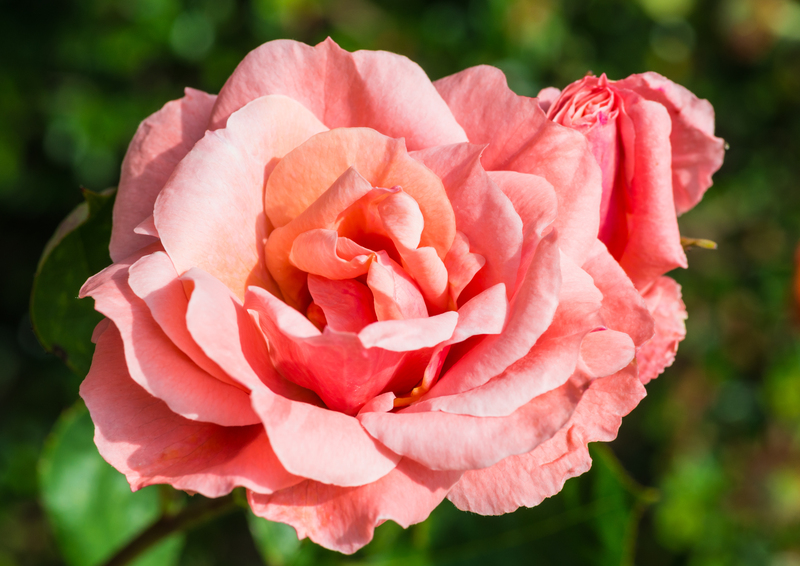Starting Fresh: Revamping a Neglected Garden
Posted on 30/04/2025
Have you recently inherited a garden that looks more like a jungle? Or perhaps life got in the way, and your green oasis turned into a wilderness. Revamping a neglected garden may seem daunting, but with the right steps and some persistence, you can transform it into a beautiful sanctuary. This article provides a comprehensive guide on starting fresh with a neglected garden, covering everything from assessing the state of the garden to implementing a maintenance routine.
Assessing the State of the Garden
Before jumping into action, take a step back and assess the current state of your garden. Identify areas that need the most attention, such as overgrown plants, weed-infested sections, and damaged structures. Taking photos can help you document your garden's transformation and keep track of progress.

Clearing Out the Overgrowth
Start by clearing out dead plants, fallen leaves, and any debris. Use pruning shears to trim back overgrown bushes and trees. For larger areas with dense vegetation, you may need a trimmer or even a chainsaw. Dispose of organic waste responsibly by composting or using a green waste disposal service.
Soil Testing and Preparation
Healthy soil is crucial for vibrant plant growth. Conduct a soil test to determine its pH level and nutrient content. Based on the results, amend the soil with appropriate fertilizers or compost. Digging and turning the soil will also help to aerate it, making it easier for roots to establish.
Designing the New Layout
With a cleared canvas, it's time to design the new layout of your garden. Consider the following elements:
- Sunlight Exposure: Place sun-loving plants in areas that receive the most light.
- Soil Type: Group plants with similar soil requirements together.
- Aesthetic Appeal: Think about color schemes, plant height, and overall garden harmony.
Create a rough sketch to visualize your ideal garden. Online garden design tools can also be helpful.
Selecting Plants and Flowers
Choose a mix of perennial and annual plants to ensure year-round interest. Native plants are usually more resilient and require less maintenance. Additionally, consider the blooming seasons of different flowers to have a continuously blooming garden.
Planting and Mulching
When planting, dig holes twice as wide as the root ball and plant to the same depth as the nursery pot. Space your plants according to their mature size to avoid overcrowding. After planting, apply a layer of mulch to retain moisture and suppress weeds.
Installing Garden Structures
Adding structures like trellises, arbors, and benches can enhance the look and functionality of your garden. These elements provide support for climbing plants and create focal points. Consider pathways using gravel, brick, or stepping stones to make navigation easier and add visual interest.
Setting Up a Watering System
Consistent watering is essential for new plants to thrive. Install a drip irrigation system or use soaker hoses to deliver water directly to the roots. If you prefer hand watering, ensure you do it early in the morning or late in the evening to prevent water evaporation.
Implementing a Maintenance Routine
Regular maintenance is key to keeping your garden in top shape. Set aside time each week for tasks such as weeding, pruning, and deadheading spent flowers. Check for pests and diseases regularly and act promptly to control any outbreaks.
Pros and Cons
Pros:
- Revitalizing a neglected garden can increase property value.
- Gardening promotes physical activity and mental well-being.
- A well-maintained garden provides a sanctuary for local wildlife.
Cons:
- Initial stages can be labor-intensive and time-consuming.
- Potential costs for soil amendments, plants, and garden structures.
- Requires ongoing effort and commitment for maintenance.
Tips for Success
- Start small and tackle one section at a time to avoid feeling overwhelmed.
- Invest in quality tools to make the process easier.
- Join a gardening group for advice and encouragement.

Takeaways
- Assess your garden and prioritize areas that need attention.
- Clear out overgrowth and prepare the soil.
- Design a new layout and choose appropriate plants.
- Install necessary garden structures and a watering system.
- Commit to a regular maintenance routine.
Conclusion
Revamping a neglected garden is a rewarding endeavor that transforms an overlooked space into a vibrant sanctuary. With careful planning, the right tools, and regular maintenance, you can restore the natural beauty of your garden. Whether you're a seasoned gardener or a novice, following these steps will set you on the path to a flourishing garden. Happy gardening!



